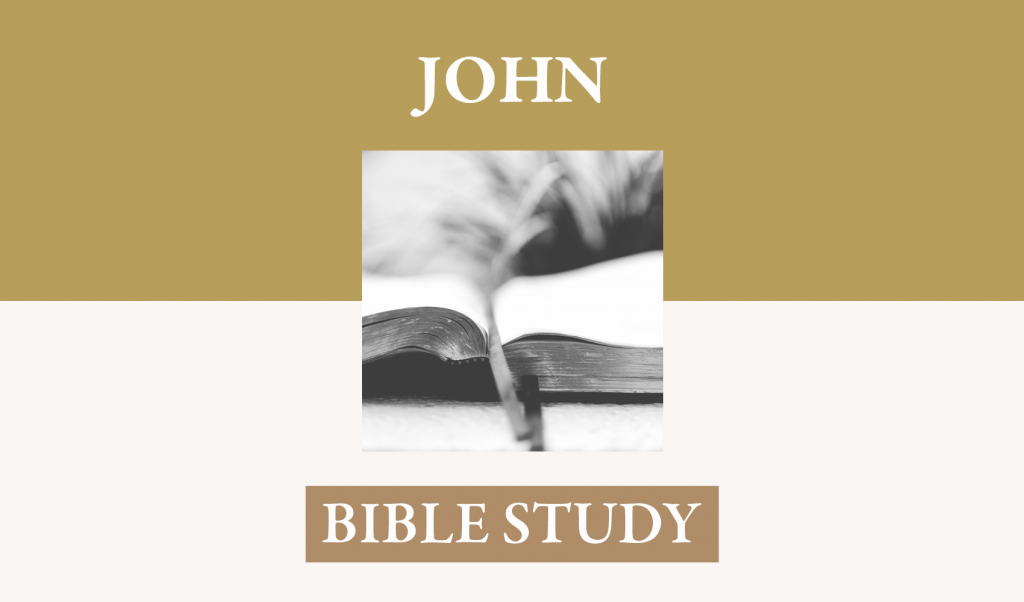John 18:1-11
Having prayed for his own, and being assured that he would lose none of them, Jesus now moves toward the rapidly developing events that could make them fall and would certainly end in his death. But he has already shown his control of all these events. In this chapter he continues to make sure that the events unfold as he has determined. Leon Morris comments that John “stresses the divine overruling.”
I. To give himself to the cup of God’s wrath, he gives Himself up to the Betrayer.
This passage of Jesus from the house in which he had taken the Supper (13:1ff), given these discourses (14-16) and offered his priestly prayer (17), over the Kidron Valley is quite significant in its messianic implications.
1. Over this brook and through this valley David and all those that followed him crossed when Absalom pursued him (2 Samuel 15:23).
-
-
- By contrast, David did this to preserve his life, the integrity of the Kingdom, and maintain the proper succession to the throne. When Jesus crossed this brook, he went into a garden to face the reality of the coming wrath of his Father and make his culminating submission to his sacrificial death.
- By parallel, David and David’s greater Son entered this conflict through the betrayal of one whose trust and loyalty should have been sure and encouraging; instead, their treachery and self-centered love of the world led to infamous betrayal.
-
2. Josiah destroyed the worship paraphernalia of Baal in the fields of Kidron and at the brook (2 Kings 23:4, 6). Jesus crossed the brook to secure the final sacrifice that would put an end to all the rhythm of sacrifices and secure a people that would worship in Spirit and in truth. Josiah honored the moral law of the first table allowing no other supposed gods to compete for the affections of the people. Jesus honored that same law in taking the condemnation that the law demands toward its transgressors and absorbed it into his human nature—body, soul, and spirit—so that “God would be just at the same time he is the justifier of the one whose trust is in Christ, through his redeeming work” (Romans 3:21-26).
3. This stream was connected to a canal that came from the temple into which the blood and offal of the sacrificial victims was thrown. It was called Kidron because of its dark color, probably, and at the time Jesus crossed it would have been red with the blood of the sacrifices.
4. The garden into which Jesus entered is called Gethsemane in Matthew and Mark; it is situated on the “mount of olives” in Luke and is identified in the past tense (“was”) in John, as if it is possible that it was destroyed in the decades between this event and John’s writing of the Gospel. But it was natural that several gardens would be in the location because of the collection of fertile soil through the centuries to be used for dunging the trees.
II. To give himself up to the cup of God’s wrath, Jesus gave himself up to a mixture of Romans and Jews. He was crucified by Jew and Gentile (Acts 2:22, 23) and would save Jew and Gentile.
A. Judas knew that Jesus would go there, for “Jesus often met there with his disciples.”
Luke said that going there with his disciples was “his custom.” Not only did Judas know that Jesus would be there, isolated, away from the crowds, and so easily arrested and taken into custody, but Jesus knew that Judas would come there to give him up to the authorities. Jesus, knowing that Judas was in the business of betrayal does not try to conceal himself, but makes himself vulnerable. He is in control of the entire event.
B. The events of Jesus’ time of prayer are passed over by John, and he introduces events that the synoptics do not include.
The resolution of Jesus’ time of prayer in Gethsemane is summarized in verse 11 as John records Jesus’ words, “Put your sword into its sheath; shall I not drink the cup that the Father has given me?” Jesus had already fought this battle in prayer; Peter’s sword was useless to stay the true terror that lay ahead. The time is very tense and fast-moving and Jesus has conversations with Judas, his disciples, the crowd of soldiers, and has to stabilize an intensely inflamed situation that could have resulted in a battle fatal for his disciples. There may be more than one way to seek a reconstruction of these events, but a possible order follows.
1. Jesus emerges from the time of prayer in Gethsemane.
2. Because of the alarm raised by the Jewish accusations of Jesus’ political aims, a “great multitude” or “great crowd” also called “crowds” (Matthew 26:47, 55) arrived at the garden spot, known well by Judas. This included a large number of Jewish officials and probably 500 Roman soldiers. Their leader of the Roman group is called a “chiliarch” which means the head of a thousand. A “band” of this thousand probably is half the corps. In light of the highly intensified rumors concerning Jesus, it is not at all fanciful to conceive of 500 armed Roman soldiers accompanying this group of Jewish accusers. Several arrest attempts had failed. They were determined this one would not (John 7:30, 32, 44-47; 8:20; 11:47-53, 57).
3. There are two possible scenarios in the sequence between the kiss of Judas and the confrontation engineered by Jesus. As we see, John does not record the kiss.
-
-
- Judas does not act immediately, for, along with the others, he could have been surprised at the openness of Jesus and how quickly he took control of the situation, and kissed him as the “sign” only after the second time that Jesus said “I am” the one you seek. Perhaps it took a while for a man with an increasingly accusing conscience to get the nerve to follow through with his betrayal. Lending credibility to this construction is the word of Mark, “And when he was come, straightway he came to him . . .”
- It is also possible, however, and the reconstruction of sequence and psychology would not be incompatible with an immediate approach of Judas to Jesus (to get it over with) followed by a brief but private interaction between Jesus and his former treasurer. Verse three would imply that Judas’s arrival immediately resulted in the manifestation of false affection. The words of Verse 5, “Who betrayed him,” could indicate that the kiss already has occurred and Judas has stepped back. Jesus immediately continued with the series of questions to the great crowd, who, in the vast majority, may have been oblivious to the interaction between Jesus and Judas. Judas sunk back to the crowd after the painful experience of gross disloyalty (verse 5).
-
4. John is interested in the way that Jesus manifests his control of the entire scene. Note that John inserts Jesus’ full consciousness of the meaning of all this and how it would play out (“knowing all that would happen to him”). This has been a consistent theme (cf. 12:27-33; 13:1-4). Jesus also sought to arm his disciples with some elements of this knowledge beforehand, for it gives assurance and a sense of purpose even in the time of trouble and opposition (16:1-4).
-
-
- Instead of having to seek him out, as they were prepared to do conceiving of him as a fugitive and a plotter, with lanterns and torches, Jesus stands in the open and asks them whom they seek (5). Having the answer so quickly and unevasively, they fell back (6). Jesus’ use of the “I am” is a major part of the self-consciousness of Jesus that John consistently highlights.
- Their falling back could be as a defensive posture, preparing for an immediate attack from the followers of Jesus, being completely ignorant of the size of his contingent or of his intent in this bold confrontation. It could also be a manifestation of the power of holiness, moral purity, absolute confidence, and utter transparency. Only a shred of the moral glory of Christ is enough to cause sinners to quake. If this is the cause of the retreat, it is an infinitesimal part of what will occur when 2 Thessalonians 1:8-10 and Revelation 6:15-17 come to pass. The glory of the resurrected Christ and the fierceness of his just wrath against his enemies will make them cower more completely even calling for natural disasters to cover them to hide them from the Lamb.
-
III. Jesus manifests his perfect willingness to submit to the work of reconciliation.
A. Verses 7, 8 – Now that Jesus has been identified twice possibly, first by the sign and then by his self-identification, they still are flummoxed; so he asked again, who they seek.
A part of his strategy is to have them state with clarity that they have no issue with anyone other than he.
1. They again state their mission, and Jesus again gives the clear statement of identity with all of its messianic overtones—“I told you, I am (εγο ειμι).”
2. Now that it is clear who he is, and that it is he alone they seek, Jesus ascertains the safety of his disciples (“So, since you seek me, let these men go.” 8). Their physical deliverance at this juncture was a sign of the promise that he would also preserve them spiritually and would lose none of them. John makes sure the reader does not lose this connection (9). They would come to see the glory that he had with the Father before the world was.
3. Again, in the reconstruction of these events, it is possible that at this point Judas, finally seals the certainty of Jesus’ self-disclosure by the sign of a kiss.
B. verse 10, 11 – Now surmising what was taking place, the disciples asked if they should take action (Luke 22:49), and, not waiting for an answer, Peter swung wildly (either back-handed or left-handed) and managed to cut off the ear of the High Priest’s servant, perhaps striking a glancing blow on a ducking man, a man than John knew as “Malchus.”
One can imagine that in light of the tenseness of the entire scene, the captors’ expectation that they would have to fight, Peter’s action greatly compromised their safety. Jesus, however, in full control, calms Peter down, lays claim to the cup of suffering in this his hour of glory. He quickly put an end to the moment of violence with several words to his disciples (Luke 22:51; Matthew 26:52-54). In addition, his immediate restoration of Malchus’s ear (Luke 22:51), precluded any reason for retaliation. So again, Jesus demonstrated his control of the entire situation.
C. Showing the complete manifestation of his submission to the will of his Father, accomplishing the work for which the Father sent him, Jesus completes the time in the garden with a statement that shows how far these events transcend human contrivance and connivance, how far they are above Peter’s futile attempt to thwart the event through his sword, and how utterly devoid of any effectual power was the secretive and mercenary betrayal of Judas. “The cup which the Father has given me, shall I not drink it?”
IV. Observations
A. This is the hour to which Jesus has been referring throughout the epistle.
Jesus knew when it was to come, knew when it came, and controlled all the events of its unfolding. Not only does he “work all things after the counsel of his own will” (Ephesians 1:11” but he does it in accordance with his “own purpose and grace which was given us in Christ Jesus before the world began” (2 Timothy 1:9).
B. Jesus moved toward this hour with alacrity and determination, having set it before him undeterred by any other consideration than to do the will of his Father and show forth his glory.
Hebrews 12:2 describes this relentless pilgrimage in these words—“Who for the joy set before him, endured the cross, despising the shame.” The joy of completing his Father’s will, showing forth his Father’s great patience and grace, caused his enduring quest for this hour, and made its shame appear a mere trifle compared to that glory of showing the cross as the power of God and the wisdom of God.




















